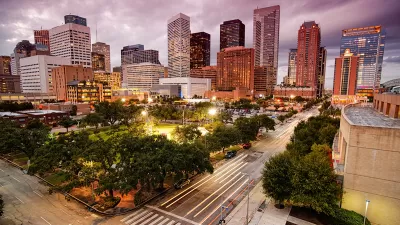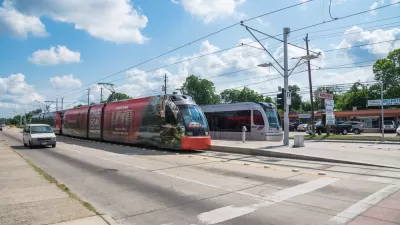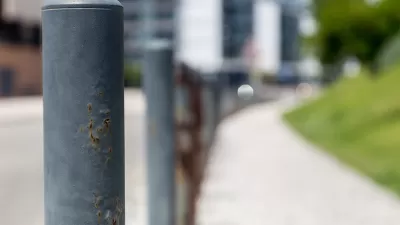City officials in Houston are set to consider plans to incentivize broad pedestrian walkways near existing and planned light rail stations within the city.
"The city's urban transit corridors ordinance, which it began developing in June 2006, is expected to be considered by the City Council in July. It would offer incentives for developers in six light rail corridors to include a 15-foot "pedestrian realm" with broad, unobstructed sidewalks and other features intended to create appealing, walkable environments.
The new development created under this ordinance will become part of the daily lives of more than 160,000 people the Metropolitan Transit Authority expects to be riding its trains by 2030. Within the next five years, the agency plans to add five new rail lines to the Main Street line it opened on Jan. 1, 2004.
The impact of the ordinance will depend on developers' willingness to comply with its mostly voluntary standards. Those who agree to create the pedestrian zone will automatically be exempt from rules requiring buildings to be set back a specified distance from the street, giving them more space to build revenue-generating offices, homes or shops."
Thanks to Reconnecting America
FULL STORY: Houston's hope: Easier to catch a train

Trump Administration Could Effectively End Housing Voucher Program
Federal officials are eyeing major cuts to the Section 8 program that helps millions of low-income households pay rent.

Planetizen Federal Action Tracker
A weekly monitor of how Trump’s orders and actions are impacting planners and planning in America.

Ken Jennings Launches Transit Web Series
The Jeopardy champ wants you to ride public transit.

Crime Continues to Drop on Philly, San Francisco Transit Systems
SEPTA and BART both saw significant declines in violent crime in the first quarter of 2025.

How South LA Green Spaces Power Community Health and Hope
Green spaces like South L.A. Wetlands Park are helping South Los Angeles residents promote healthy lifestyles, build community, and advocate for improvements that reflect local needs in historically underserved neighborhoods.

Sacramento Plans ‘Quick-Build’ Road Safety Projects
The city wants to accelerate small-scale safety improvements that use low-cost equipment to make an impact at dangerous intersections.
Urban Design for Planners 1: Software Tools
This six-course series explores essential urban design concepts using open source software and equips planners with the tools they need to participate fully in the urban design process.
Planning for Universal Design
Learn the tools for implementing Universal Design in planning regulations.
Heyer Gruel & Associates PA
Ada County Highway District
Institute for Housing and Urban Development Studies (IHS)
City of Grandview
Harvard GSD Executive Education
Toledo-Lucas County Plan Commissions
Salt Lake City
NYU Wagner Graduate School of Public Service





























